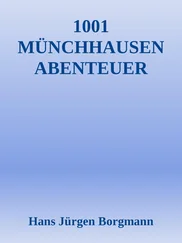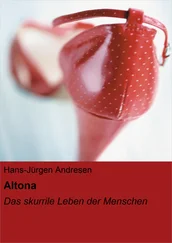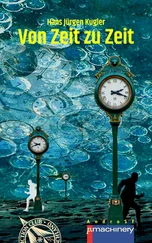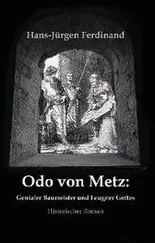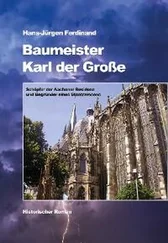Motivated by the deficiencies and shortcomings outlined here, the authors are endeavoring to correct these flaws. To accomplish this, they have chosen to adopt an approach that, contrary to the way textbooks are usually structured, puts the cart before the horse, so to speak. To be precise, the first part of the book (A) starts with a brief overview chapter on the subject of painful CMD, then presents clinical instructions at the simplest level but based on a high level of external evidence (cooking recipes without detailed explanations). These recommendations are supported by the minimum of diagnostics and can be followed by direct, affordable laboratory fabrication of the required occlusal splint. Necessary and useful co-therapies are addressed with a brief “When?” and “Why?” “Internal proofs” refer to the expanded scientific basis of the procedure, pointing to the relevant chapters in the second part of the book (B). All the background details about the etiology, advanced diagnostic techniques, neurobiology, and pathophysiology are dealt with solely in part B.
The authors feel sure that this primarily pragmatic approach will enable readers, in a self-organizing manner, to develop their knowledge about treatment for painful CMD—from simply taking the right course of action through to developing a high level of expertise. We hope you will find this a fascinating and instructive read. We always welcome any comments or suggestions you may have.
“Bene docet, qui bene distinguit.” [He teaches well who distinguishes well.]
—Horace
The authors express special thanks to Tine Ade, Karlsruhe, Germany, for developing the illustrations in this book.
Contributors
Lydia Eberhard, Dr Med Dent
Department of Prosthodontics
University of Heidelberg
Heidelberg, Germany
Nikolaos N. Giannakopoulos, PD Dr Med Dent, MSc
Department of Prosthodontics
University of Würzburg
Würzburg, Germany
Daniel Hellmann, PD Dr Med Dent
Department of Prosthodontics
University of Würzburg
Würzburg, Germany
Alfons Hugger, Prof Dr Med Dent
Department of Prosthodontics
School of Dentistry
Heinrich Heine University
Düsseldorf, Germany
Bernd Kordaß, Prof Dr Med Dent
Department of Prosthodontics, Geriatric Dentistry and Medical Materials Science
University of Greifswald
Greifswald, Germany
Martin Lotze, Prof Dr
Functional Imaging Unit
Institute of Diagnostic Radiology and Neuroradiology
University of Greifswald
Greifswald, Germany
Hans Jürgen Schindler, Prof Dr Med Dent
Department of Prosthodontics
University of Würzburg
Würzburg, Germany
Marc Schmitter, Prof Dr Med Dent
Department of Prosthodontics
University of Würzburg
Würzburg, Germany
Jens Christoph Türp, DDS, Dr Med Dent, MSc, MA
Department of Oral Health and Medicine
University of Basel
Basel, Switzerland
Part A
Practice of Occlusal Splint Therapy and Coordinative Training
1
INTRODUCTION
Jens C. Türp
Craniomandibular Dysfunction
Terminology
Technical terms must be clarified to avoid misconceptions and misunderstandings, especially when describing the factors relating to function. In particular, a distinction must be made between “dysfunction of the masticatory system,” “craniomandibular dysfunction,” and “myoarthropathy of the masticatory system”; these terms should not be considered synonymous. In 2016, the German Society for Functional Diagnostics and Therapy published proposed definitions for these and other important terms for the first time. 1
Dysfunction of the masticatory system
Dysfunction of the masticatory system refers to a “short- or long-term disturbance of the homeostasis or economy of the masticatory system caused by any structurally or functionally substantiated deviation from normal function, such as functional deficits due to trauma, injury to the structural integrity, and functional/parafunctional stress, including deviations that justify prosthodontic, orthodontic, or surgical measures.” 1
Craniomandibular dysfunction
Craniomandibular dysfunction (CMD) is classified as “a specific functional disorder that affects the muscles of mastication, the temporomandibular joints (TMJs), and/or the occlusion.” 1 Clinically, CMD encompasses the areas of pain and/or dysfunction.
Painis manifest as:
Masticatory muscle pain
TMJ pain
Toothache of (para)functional origin
Dysfunctioncan appear in the form of:
Painful or nonpainful limitation of movement of the mandible (aspect aimed at mandibular movements)
Hypermobility or incoordination of the mandible (aspect aimed at mandibular movements)
Painful or nonpainful intra-articular dysfunction (aspect aimed at the TMJ)
Premature contacts interfering with function and gliding obstacles (aspect aimed at the occlusion)
CMD is a collective term that encompasses symptoms not in need of treatment and symptoms that do need treatment. In principle, there is always a need for treatment when pain is present; in the case of dysfunction, the need for treatment is dependent on the severity of the dysfunction.
Myoarthropathy of the masticatory system
Myoarthropathy of the masticatory system (MAP), a term introduced in 1970 by Tübingen dentist Willi Schulte, 2 denotes a subgroup of craniomandibular dysfunction. It refers to symptoms and findings affecting the muscles of mastication, the TMJs, or associated tissue structures; it does not take into consideration the occlusion. This term equates to the term “temporomandibular disorder (TMD).” If pain is involved, these symptoms can be summarized under the heading “myoarthropathic pain.”
Etiology
Numerous mechanisms have previously been held responsible for the etiology of myofascial pains of the muscles of mastication and pains in the TMJs. Nociceptive pain is currently the underlying basis of models for these musculoskeletal symptoms. This nociceptive pain can be triggered by overloading of the tissue and promoted by a number of disposing factors. Microtrauma and local ischemia 3 —together with their structural and functional counterparts, such as activated osteoarthritis, 4 the myofascial trigger point, 5 local muscle fatigue, and aching muscles 6 —essentially serve as overarching pathophysiologic explanatory models. Common to these hypotheses is the assumption that, at the end of the causal chain, afferent nerve fibers and tissue cells release protons 7 and other endogenous algesic substances (eg, glutamate, substance P, bradykinin, histamine, prostaglandin E, serotonin, potassium ions, adenosine triphosphate) that mediate the excitation and sensitization of nociceptors (group III and IV muscle afferents).
Modern concepts 4 , 8 distinguish between the following influencing factors:
Predisposing (eg, genetic, structural, systemic, psychologic)
Initiating (eg, microtrauma, macrotrauma, overloading)
Sustaining/perpetuating (eg, psychosocial)
The classification into the individual categories is not intended to be rigid. For instance, overload of the sustaining and psychosocial conditions may be the predisposing factor in one patient, whereas the opposite pattern will apply in another patient. It is important to interpret this conceptual framework correctly, in the sense that a single influencing factor is not usually capable of causing musculoskeletal pains.
Meanwhile, there is evidence that endogenous or exogenous substances, such as estrogen, 9 nerve growth factor (NGF), 10 and glutamate, 11 might play a key role in the etiology of painful CMD. The fact that glutamate is able to cause peripheral sensitization without discernible signs of inflammation is extremely important in this context. 11 These new findings have rarely been discussed in the dental literature, but they offer a plausible explanation for the observation, which has long been made and is proven through epidemiologic studies, that females, especially women of child-bearing age, more commonly suffer from myoarthropathic pain than men. 12 , 13
Читать дальше


